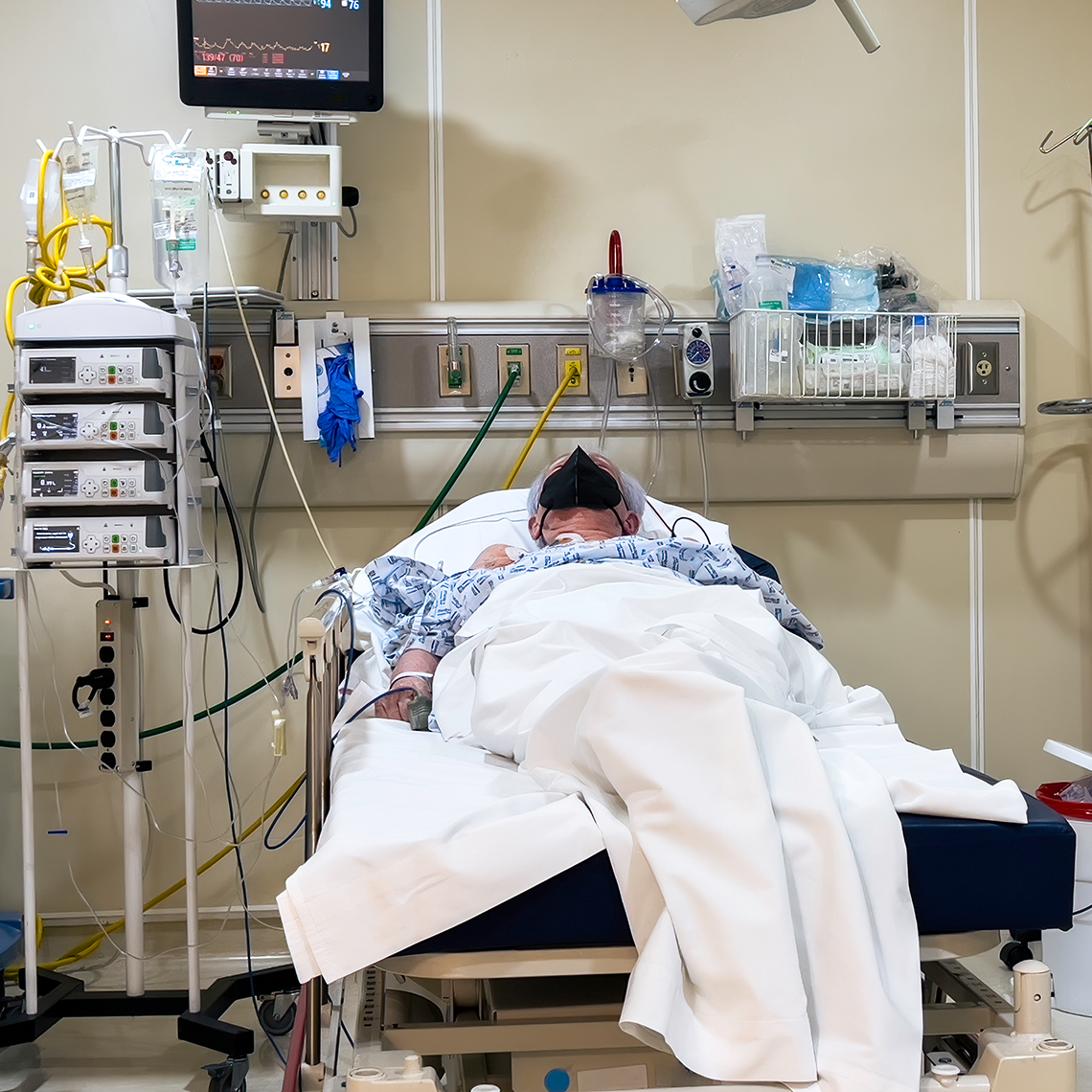Case Study
Gaps in Clinical Workup Lead to Young Patient’s Missed Colorectal Cancer

Description
A 33-year-old woman was diagnosed with colon cancer more than two years after her initial complaint of rectal bleeding.
Key Lessons
- Gaps in clinical workup can lead to flaws in medical decision-making.
- Sub-optimal surgical/invasive procedures can lead to missed diagnoses.
Clinical Sequence
A 31 -year-old woman with no significant medical history complained of rectal bleeding to her primary care physician, a cardiologist. At this visit, she also described hard stools with hematochezia and possibly hemorrhoids. The cardiologist performed a digital rectal exam which identified external hemorrhoids and was negative for occult blood. The cardiologist recommended the patient increase her dietary fiber intake and noted a colonoscopy would likely be ordered, although this did not happen.
Eleven months later, when the patient returned to the cardiologist, she complained again of rectal bleeding. Lab work, including a complete blood count, was normal. At this visit, the patient was scheduled for the colonoscopy, which was performed the following week. It revealed a single, mild internal hemorrhoid and a normal colon to the cecum. Per the gastroenterologist’s notes, the colon was well-prepped for the exam and the “cecal area was seen from a short distance” using a pediatric scope. A single image was obtained during this procedure.
Several months following the procedure, the patient returned to her cardiologist with complaints of hard stool and blood on the toilet paper. The cardiologist documented the assumption that this was associated with the hemorrhoid seen via colonoscopy.
Four months later, the patient was seen by another provider in the cardiologist’s office for complaints of hematochezia. She was advised to return if her symptoms persisted, and a gastroenterology referral would then be initiated.
The patient returned to her cardiologist several times over the following months for complaints of extreme fatigue. Her weight was noted to be stable; no further tests were ordered or completed. Neither discussion of her previous complaints of rectal bleeding nor any differential diagnoses were documented.
A year later (32 months after her initial complaint), the patient presented to the Emergency Department with severe abdominal pain, nausea, and vomiting. She was severely anemic and received three units of packed red blood cells. A CT scan revealed distention and free fluid in her colon, and two hepatic lesions.
Surgical intervention included a right-sided colectomy, resecting the mass in the patient’s hepatic flexure, and removal of the lesions from the right lobe of her liver. Pathology diagnosed moderately differentiated mucinous adenocarcinoma, positive lymph nodes, and (Stage IV) liver metastases. A subsequent PET scan identified three additional hepatic lesions.
Despite ongoing treatment, the patient died nine months later.
Allegation
A case was asserted against the cardiologist and gastroenterologist for failure to diagnose colon cancer.
Disposition
This case settled in excess of $1M.
Discussion Points
Medical Decision-Making
The patient’s self-reports of rectal bleeding were mismanaged for more than two years.
Several factors contributed to the missed diagnosis, including an over-reliance on previously normal findings and narrow diagnostic focus. The abnormal findings were not adequately evaluated, even as the patient returned multiple times to be evaluated for related complaints. This was exacerbated by an overall failure to establish a differential diagnosis.
Behaviors that support medical decision-making:
- Aggressive follow up and communication with the patient
- Use of decision-support tools (e.g., diagnostic checklists; algorithms)
- Generate, filter, and rank differential diagnoses (e.g., mental CT scan, constellations, bundling)
- Engage in formal cognitive debiasing (What can’t I afford to miss?)
Poor Technique
A sub-optimal colonoscopy led to an adenoma being missed.
The plaintiff and defense experts criticized visualization of the cecum from a distance, and that only a single image was captured during the procedure. The patient’s good bowel preparation would have allowed for meticulous visualization and photo-documentation into the cecum at the time.
Examples of factors related to high-quality colonoscopy:
- Adequate bowel preparation
- Meticulous visualization of the mucosa
- Intubation of the cecum (rate equal to or greater than 95 percent for screenings)
- Photo-documentation including the appendiceal orifice and ileocecal valve/terminal ileum
- Adenoma detection rate greater than or equal to 25 percent overall
References
- Ely JW, Graber M and Croskerry P. Checklist to reduce diagnostic errors. Academic Medicine. 2011;86(3):307-13.
- Gupta S et al. Recommendations for follow-up after colonoscopy and polypectomy: A consensus update by the US multi-society task force on colorectal cancer. Gastrointestinal Endoscopy. 2020;91(3):463-85.
- Rex D et al. Colorectal cancer screening: Recommendations for physicians and patients from the U.S. Multi-Society Task Force on Colorectal Cancer Gastrointestinal Endoscopy. 2017;86 (1):18-33.
- Rex D et al. Quality indicators for GI endoscopic procedures. Gastrointestinal Endoscopy. 2015;81(1):31-53.
- Leeds FS et al. Teaching heuristics and mnemonics to improve generation of differential diagnoses. Medical Education. 2020;25:1.
- Mamede S et al. ‘Immunising’ physicians against availability bias in diagnostic reasoning: a randomised controlled experiment. BMJ Quality & Safety Published Online First: 27 January 2020.
- Poon EG et al. Cognitive errors and logistical breakdowns contributing to missed and delayed diagnoses of breast and colorectal cancers: a process analysis of closed malpractice claims. J Gen Intern Med. 2012;27(11):1416‐23.
- CRICO. (2019) Prevention & Early Detection of Colorectal Cancer: A Decision Support Tool. Accessed May 18, 2020. [archived guideline]
This is a fictitious case that illustrates commonly encountered issues and is for educational purposes only. Any resemblance to real persons, living or dead, is purely coincidental.
See More MPL Cases
Medication Mix-up Contributes to Patient’s Death


Incidental Does Not Mean Insignificant

When Test Results Go Unspoken

